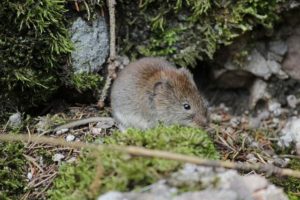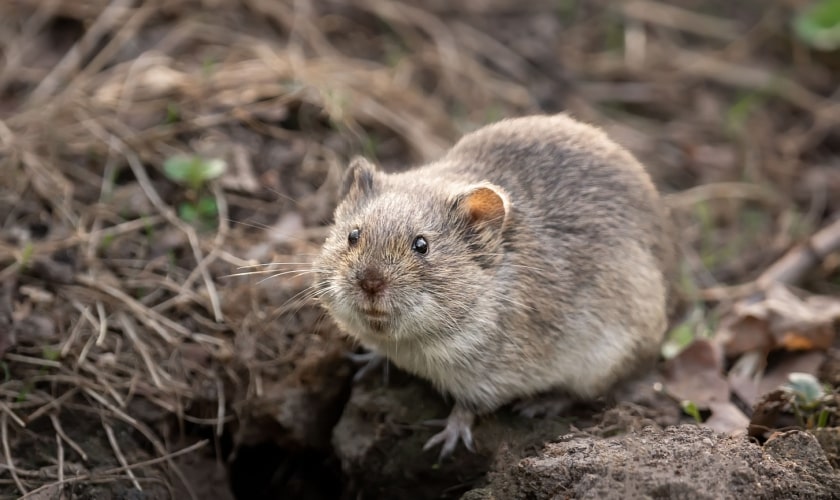Handling Vole Damage: Effective Control Methods
Handling Vole Damage: Effective Control Methods
Blog Article
Mastering Vole Insect Control: Thorough Insights on Problem Prevention and Treatment Methods
By recognizing the refined indicators of vole invasion early on, we can take aggressive measures to avoid extensive damages. In this conversation, we will certainly discover the subtleties of vole actions, dive into the recognition of infestation signs, and uncover the most effective avoidance and treatment approaches.
Recognizing Vole Habits
Taking a look at the foraging patterns of voles offers useful insights right into their behavior and environment choices. By observing their foraging behavior, researchers can get a much better understanding of where voles like to develop their habitats and the degree of their environmental influence.
Research shows that voles display discerning feeding behaviors, choosing roots, bulbs, and seeds. This dietary preference influences their foraging patterns, leading them to locations abundant in plant life and ground cover. Furthermore, voles are known to create sophisticated tunnel systems for foraging and nesting objectives, showing a high degree of versatility to their environments.
Understanding vole habits is essential for carrying out targeted insect control actions that disrupt their environment choices and foraging activities (vole control utah). By researching their habits, specialists can establish much more reliable prevention and treatment techniques to manage vole problems

Identifying Indications of Vole Problem
Vole invasions can be spotted by recognizing details indications of their visibility in a location. Among the most typical signs of a vole problem is the visibility of surface area paths. Voles produce networks of narrow pathways on the ground that are normally about 2 inches broad. These runways are usually discovered in grassy areas or underneath mulch or ground cover where voles can relocate easily and search for food.
Another essential sign of vole infestation is the existence of tiny burrow openings in the ground. Voles dig shallow burrow systems with multiple entrances and leaves. These burrows work as sanctuary and nesting sites for the voles. Additionally, voles are known to leave eaten plant stems, origins, and bulbs near their burrow openings, indicating their feeding activity in the location.
Discovering these droppings along runways or near burrow openings can validate a vole invasion. By being attentive for these indicators, property owners can promptly deal with vole infestations and prevent further damage.
Applying Proactive Prevention Actions

Moreover, utilizing natural vole deterrents like castor oil-based repellents or predator urine can work as reliable safety nets. It is additionally suggested to frequently check outdoor rooms for any kind of indicators of vole activity, such as paths or delve openings, to address prospective invasions promptly. vole control utah. By embracing these proactive avoidance approaches, homeowner can substantially lower the probability of vole damages and maintain the health and wellness and visual appeals of their landscapes
Effective Therapy Techniques
Incorporating targeted trapping methods and utilizing authorized rodenticides are crucial elements of effective treatment strategies for handling vole invasions. Trapping can be an efficient way to decrease vole populations, specifically when positioned purposefully in their energetic runways. Break traps and live catches can both work, with the last permitting the capture and moving of voles. When utilizing rodenticides, it is important to adhere to safety guidelines to protect against injury to non-target pets and pet dogs. Location rodenticides in protected bait stations to reduce dangers to unintended targets. Additionally, environment alteration, such as decreasing ground cover and eliminating resources of food, can help prevent voles from infesting a location. Normal monitoring and maintenance are also key facets of successful therapy approaches to ensure that vole populations are kept under control. By incorporating capturing, rodenticides, environment modification, and consistent tracking, effective vole pest control can be attained.
Monitoring and Maintenance Tips
Normal tracking enables for the early discovery of vole task, allowing timely treatment prior to invasions intensify. To successfully monitor vole populaces, tactically put traps can be used in vole paths or near burrow entrances.
Furthermore, maintaining a neat and well-kept landscape is necessary in vole avoidance. Clearing up away debris, such as piles of timber or thick plants, eliminates possible vole habitats. Regularly trimming and cutting grass plants assists minimize vole hiding spots and minimizes their accessibility to food resources.
In addition, continuous maintenance of physical barriers, such as fencings or cable mesh, is vital to protect against vole intrusion. Inspecting and repairing any kind of problems to vole yard damage these frameworks makes certain that vole control stays efficient in protecting properties from invasions. By including these tracking and upkeep methods right into a thorough vole insect control plan, people can properly take care of vole populaces and safeguard their homes from damages.
Verdict
Finally, understanding vole insect control needs a solid understanding of vole behavior, the capability to identify indicators of invasion, applying positive avoidance steps, efficient treatment strategies, and regular surveillance and maintenance. By taking a detailed approach to vole control, individuals can efficiently manage and protect against problems, inevitably shielding their property and surrounding setting from damages caused by these small rodents.
In this discussion, we will certainly explore the subtleties of vole actions, delve into the identification of problem indicators, and uncover the most efficient prevention and treatment methods.Integrating targeted trapping techniques and using accepted rodenticides are essential elements of effective treatment strategies for handling vole problems. To efficiently monitor vole populaces, strategically positioned traps can be made use of in vole runways or near burrow entrances. Inspecting and fixing any type of damages to these structures makes sure that vole control continues to be reliable in guarding properties from infestations. By incorporating these surveillance and upkeep techniques into a thorough vole pest control plan, people can successfully handle vole populations and secure their residential properties from damage.
Report this page